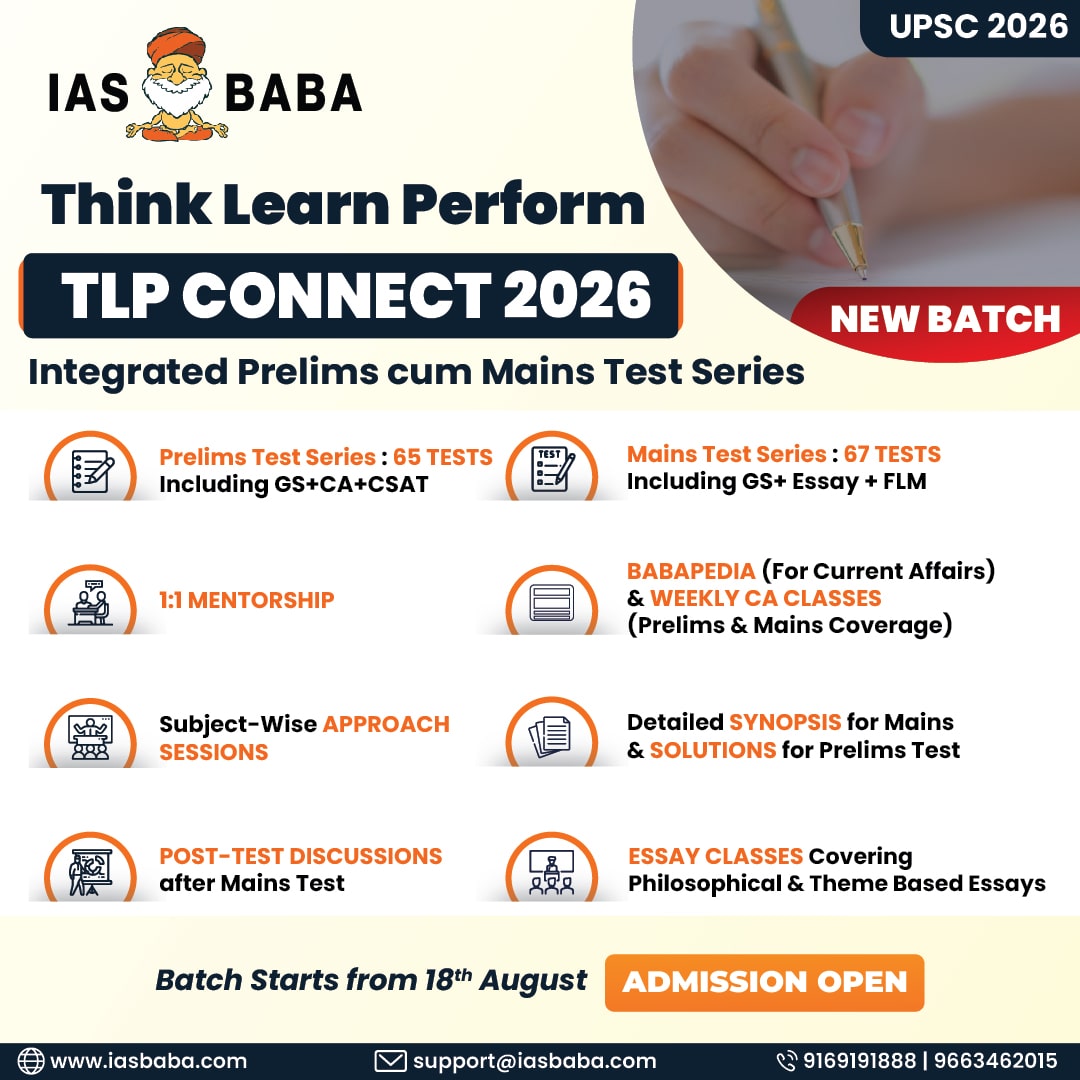IASbaba's Daily Current Affairs Analysis, IASbaba's Daily Current Affairs September 2015, National, UPSC
Archives
IASbaba’s Daily Current Affairs- 12th September, 2015
NATIONAL
Blurred division of Responsibility- Case of Punishment Posting
- In India, the elected representatives are responsible to the people and the civil servants are responsible to the Ministers. Due to some vested interests, ‘political neutrality’ has paved way for ‘political interferences’ and this has led to the phenomena of ‘politicisation of the civil service’.
- Recently, the cases of arbitrary and questionable moves by the political masters have increased manifold and has strengthened the temptation to resort to collusive practices to avoid untimely transfers and to play safe, giving rise to ‘political neutrality’ as a new hallmark.
Recent examples
- Maria, who was heading the high-profile Sheena Bora murder case was shunted out of the post and promoted as Director General of Police Home Guards.
- “Tried hard to address corruption and bring reforms in Transport despite severe limitations and entrenched interests. Moment is truly painful.”
–Khemka(46th transfer in the service of 22 years)
Constitutional Provisions
- Articles 53 and 154 vests the executive power of the Union and the States in the President or Governor directly or through officers subordinate to him and these officers constitute the permanent civil service governed by Part XIV of the Constitution.
- The President or Governor is required to act according to the aid and advice of his/her Council of Ministers, appointed under Articles 73 and 163 of the Constitution and this grants a political colour to the work-process.
- The Minister has the mandate of the people to govern, but the Secretary has an equivalent constitutional mandate to advise the Minister. Once his/her advice has been suitably considered, unless the Minister passes an illegal order, the Secretary is bound to implement it and the Minister is required to support the Secretary who is implementing his/her order.
Safeguards w.r.t arbitrary transfers:
Constitutional:Article 311
- A civil servant cannot be dismissed by any authority that is subordinate to the one by which he was appointed.
- An enquiry is important to present the information of the charges he has been framed with and to give him the ‘Right to be heard’.
Recommendations by Committes:
- AD Gorwala Committee Report, 1951
Greater understanding between ministers and civil servants
- Hota Committee, 2004
- Amending certain sections in the Prevention of corruption Act and code of Criminal procedure to protect honest civil servants
- Code of Ethics
- Public evaluation of performances
Steps taken by the government:
T.S.R Subramanium vs Union of India
- Creation of an independent Civil Services Board both at the Centre and the State for promotion and transfers of bureaucrats
- Provision of fixed tenure in service giving them protection against biased transfer by politicians
- All bureaucrats should record the directives given to them from their administrative superiors and political authorities
Indian Administrative Service (Cadre) Rules, 1955, have been amended and a new clause inserted-
- The Central Government, in consultation with the State Government or State Governments concerned, may determine the tenure of all or any of the cadre posts specified for the State concerned in item 1 of the Schedule to the Indian Administrative Service (Fixation of Cadre Strength) Regulation, 1955
- A cadre officer appointed to any post for which the tenure has been so determined, shall hold the minimum tenure as prescribed except in the event of promotion, retirement, deputation outside the State or training exceeding two months
- An officer may be transferred before the minimum prescribed tenure only on the recommendation of a Committee on Minimum Tenure as specified in the Schedule annexed to these rules
Steps taken by Supreme Court:
- Spend a minimum of two years in a posting before they can be transferred
- Setting up of a Civil Services Board to check political interference
- Advices with regards to appointments and postings should be recorded ensuring transparency and accountability
Impact on the Officer:
- Motivation is important. The loss of morale when asked to leave behind his/her vision and a failed opportunity to bring about a change is painful.
- Uncertainty of tenure leads to fear and instability in the mind that should be without fear for the proper delivery of services.
- Incentives encourage hard work but punishment attracts more malfunctioning, crippling the quality of governance.
Way forward:
- The nature of transfer should be done in an independent manner on sound administrative grounds that are clearly spelt out.
- Fixed Tenures for critical ranks like DGPs, District SPs & SHOs; to ensure smooth functioning of administration
- The tenure should be directly linked to performance targets and fast-track advancements on the basis of forward-looking career management policies and techniques should be managed by autonomous Personnel Boards for assisting the high level political authorities in making key decisions.
- Civil service boards should be constituted under statutory provisions
- The repeated shuffling is a menace for good governance and if the officer is concerned about the disruption in the flow of services due to his transfer, he should be given a chance to take his case before an Ombudsman.
- Ministers must uphold the political impartiality of the civil service and not ask the civil servants to act in any way which would conflict with the duties and responsibilities of the civil servants.
Connecting the Dots:
- Hota Committee (2004) has emphasized much on domain knowledge and merit as the basis for Senior Level Appointments. Does it appear like a case of corporate professionalism or a better way of enhancing performances? Analyse.
- Is minimalist State approach the best approach that can be followed? Critically examine in the light of globalization.
- Critically examine Article 311
Reforming teacher management in public school system
In order to improve the learning outcomes of children, it is critical that robust systems for developing high quality teachers must be in place. Lack of trained teachers seems to be one of the biggest impediments in improving the quality of education.
Teachers and teacher management have to contribute to the ultimate goals of educational development to which a society and government have committed themselves.
National Policy on Education 1986 envisages to overhaul the system of teacher education and establishment of DIETs (District institute of Education and training) to organize training courses for teachers.
What is Teacher management?
Teachers Management include following functions
- Getting teachers to school (Supply and deployment)
- Managing Teachers (Administration of pay and remuneration mix, Transfers, Motivation)
- Improving quality (Training and use of IT)
- Monitoring teaching (at school and central levels, role of non-government actors.
- Enable teachers to do good work from both pupils’ and teachers’ point of view.
- Respond to major existing (especially financial) constraints.
Why Teachers Management is required?
- Parts of the teaching force are not fully ‘used’ due to the existing school structures and the rules and regulations governing teacher training and allocation.
- Teachers need to be motivated and provided with adequate training and professional support to be effective in teaching.
- Existence of Inequality in teacher treatment, dissatisfaction and lack of unity among teaching staff are hindering the performance of teachers.
- Attracting enough qualified graduates towards the teaching profession is a big challenge in the light of decreased attractiveness in teaching profession (lower levels).
Loop holes in the existing TMS
- The Block and district levels do not have the capacities to undertake regular inspection and assessment given the expansion in schooling that has happened over the past two decades.
- The macro level policy formulation of teacher management is intended to promote the issues of quality education and improved learning outcomes. Due to the large number of teachers in the public system, the policy interpretation at intermediary level is not driven by macro level policy and fails to stress the academic purpose of school.
- Lack of utilization of information technology. A few states have employed CIS(Central information systems) and IT for gathering data on schools, issues such as transfers (Karnataka), with lot of technical glitches.
Way forward/ Reforms required
- The district and sub district levels must be equipped to address the issues of teacher management which must be in coherent with macro level policy. This will reduce the inefficiencies and release more time for academic work at the school.
- Information technology must be made use to a larger extent in the areas of teacher training; alternative methods of peer learning and peer driven assessments have to be encouraged.
- Proper implementation of Digital India will improve connectivity and smart phone penetration. This leads to the use of social media (posting of innovative solutions to common, but difficult educational problems) and discussion forums.
- Transparency, decentralization of power, development of appropriate legal and organizational frameworks and procedures as well as effective tools, incentives and control mechanism for teaching staff management are much required.
Example of Karnataka:
- Karnataka has been a front-runner among Indian states in introducing many pioneering reforms in teacher recruitment and transfers.
- In 1993, it introduced a merit-cum-reservation based recruitment system to improve objectivity and transparency in selection.
- Districts select teachers from a merit list of qualified In 1999–2000, clear priorities for postings (transfers through counselling) and computerization of the system were introduced.
BACKGROUND:
The National policy on education:
NPE is a policy formulated by GOI to promote education amongst India’s people. It covers elementary to higher education in rural and urban areas. The first NPE was promulgated in 1968 and the second one in 1986.
NPE 1968:
- Following the recommendation of Kothari commission, NPE 1968 called for “radical restructuring” and equalize educational opportunities in order to achieve national integration and economic development.
- The policy called for fulfilling compulsory education for all children up to the age of 14, as stipulated by the Constitution of India and the better training and qualification of teachers.
NPE 1986:
- This policy called for “Child centred” approach in primary education and launched “operation blackboard” to improve primary schools nationwide. And it also expanded the open university system with IGNOU.
DIETs (District institute of education and training):
- Established based on the recommendations of National education policy 1986, which is the third tier (after NCERT and SCERT) of training and resource support structure, at the district level.
- It Conducts different kinds of trainings programmes for teachers to improve the quality of basic education and strives to prepare master trainers / resource persons to guide and train the teachers who are working in primary and upper primary schools.
- Supervise the on-going different schemes of Basic Education and guide the teachers to implement the scheme in an effective way.
World Bank and education:
Over the past three decades or more, the World Bank is playing a major role in development of education. In the 1990s, the Bank significantly boosted loans for education, dispensing an average of US$1.9 billion for the period 1991-1999, approximately 8.2% of its overall lending.
- Since 2000, the WB has committed over $2 billion towards development of education in India. It also provides technical support.
- Various schemes of government of India are progressing with the help/aid of WB. Which includes Early childhood development, sarva shiksha abhiyaan, rashtriya madhyamik shiksha abhiyaan and various vocational education and training programs.
- Under Technical Quality improvement program it provides about $300 million loan assistance. (scholarships, research and infrastructure to technical institutions).
- Recently it approved $250 million program to improve the quality of Elementary teachers in Bihar.
Connecting dots:
- Does the lack of good quality education at primary and secondary level at public schools be attributed to improper teacher management system? Examine
- How digital India initiative can help reforming the education sector in India ? What are the provisions need to be included in digital India policy framework to address TMS?
- The service rendered by a professional is maximum and efficient when he is provided with a conducive atmosphere and adequate motivation at work. What are the moral obligations you think a teacher encounters in his/her service? What measures can be taken to keep his motivation high?














